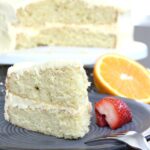Find out the basics techniques for cooking chicken, including how to season it and cook it in a variety of ways.
Find out the basics techniques for cooking chicken, including how to season it and cook it in a variety of ways.
One of the most useful and easy to accomplish kitchen skills is how to cook chicken. An extremely versatile ingredient, cuisines from around the world have a signature chicken recipe such as Chicken Cacciatore, Coq au Vin, and Southern Fried Chicken. Regardless of the origin, the majority of recipes use one of the following eight cooking methods.
In The Oven
Roasting is used most often to cook a whole chicken. Place the bird on a rack in an uncovered roasting pan to allow heat to circulate around and underneath the chicken and is basted with pan drippings to keep the meat moist and to help develop crispy brown skin.
Similar to roasting, baking uses dry heat but the food is cooked in a baking pan. Typically chicken is baked either as a casserole or as individual pieces that are cooked in a sauce.
Broiling uses direct heat from above and is most often used for pieces of chicken or a whole bird that has had the backbone removed and is then pressed flat. Preheat the broiler for 8-10 minutes. Use a broiler pan that has a slotted top piece and keep 6-8 inches between the broiler and the food.
On The Stovetop
Frying uses medium to high heat and depending on the type of frying, a varying amount of fat. Pan frying uses the least amount of fat, and deep-frying the most. To shallow fry, preheat a heavy bottom skillet. Add enough oil to reach midway up whatever you are frying and keep the oil at a constant temperature. Only flip the food once during cooking.
Sautéing is perfect for cooking thin cuts such as cutlets. Preheat a shallow, wide bottom pan over medium-high heat. When the pan is hot, add enough oil to coat the bottom of the pan, then the ingredients but do not over crowd. There needs to be space between each piece of food to allow steam to evaporate. Turn or flip the food frequently during cooking.
Stir-frying uses high heat and only a small amount of fat. Preheat a skillet or wok until the oil is very hot, add the ingredients in groups according to cooking time. Make sure not to crowd the pan so the food will fry, not stew and then keep stirring the food continuously until the vegetables are crisp tender and the chicken juices run clear.
Braising uses liquid and slow cooking process to create fork tender meals. Begin by browning the chicken in fat over a medium high heat, and then add broth or wine to deglaze the pan. After deglazing, add enough liquid to cover the meat and cover with a tight fitting lid. Cook for several hours at a low temperature either on the stovetop or in the oven.
On the Grill
For charcoal grilling, pile the briquettes into a pyramid in the center of the grill, wet with a good amount of lighter fluid and light. It will take about 20 minutes for the coals to be ready to cook on. If cooking boneless chicken parts, spread the briquettes into a single layer before placing the grill rack. Cook bone-in chicken over indirect heat by pushing the coals to the sides and then cover the grill.
Indoor grills and gas grills do not have the advantage of being able to distribute the heat by moving the ‘fire’ but they do have adjustable controls and heat zones. Whether indoors or out the idea for grilling is the same; direct (high) heat for quick cooking cuts and indirect (low) heat for slow cooking bone-in cuts or whole birds.
Versatility
Beginning cooks are often intimidated by recipes that require sautéing or braising because of their unfamiliarity with cooking terms. The terms for cooking in the oven, on top of the stove, and on the grill are basic to the kitchen and can be easily learned and with a bit of practice, mastered. Once a cook becomes comfortable with these techniques, there is no end to the variety of meals that will show up on the dinner table.





